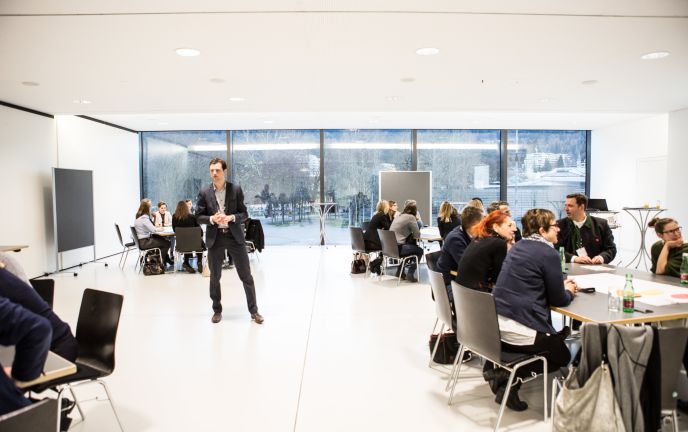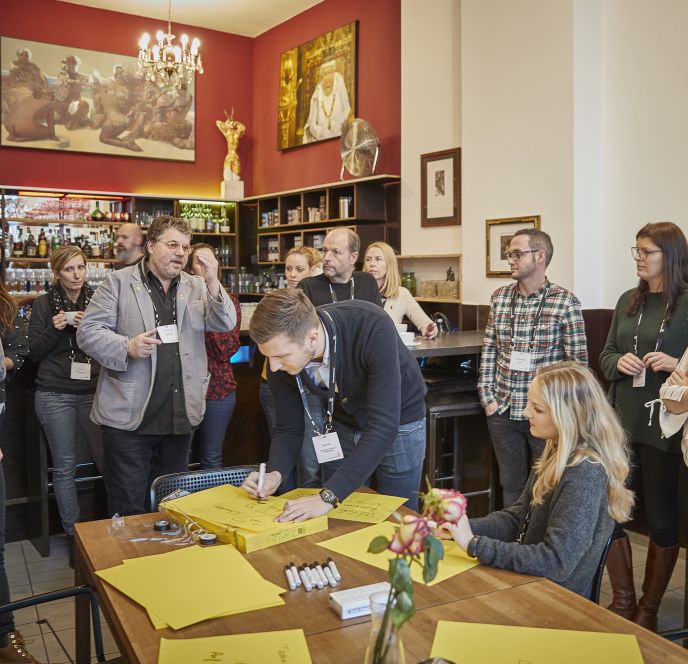These are the interesting names for innovative event formats – formats that turn seminars and meetings, conferences and congresses into interactive, creative and emotional events. Convention Partner Vorarlberg is presenting six innovative formats and would be happy to help you choose the one that’s right for your event as well as find the perfect venue in Vorarlberg to stage it.
Open Space - Brown Bag - Pecha Kucha, excuse me?

1. Open Space
Open Space conferences are not organised with a planned sequence of events, fixed speakers or fixed working groups. The result is completely open. A leader merely defines the main theme. It’s the participants who actually pursue the burning questions, shape the agenda and organise themselves into working groups. These groups then work on their respective topics, find solutions and the necessary measures.
Open Space events are particularly suitable for urgent and complex topics where the involvement of many different people is required. The same applies to cases where as many ideas as possible are needed for a new project. The number of participants may range from at least 12 to 1,000 and more. In line with the Law of Two Feet, participants should only remain in working groups for as long as they are able to contribute to the group or learn something. So moving between groups is not only permitted, it’s even desirable. Open Space conferences may last from a few hours to several days.
2. World Café
In contrast to the Open Space format, the questions and sequences at World Café events are precisely defined. The aim is to bring the (expert) knowledge of the individual participants together, to get people to enter into strategic dialogues – and to create a relaxed coffee-house atmosphere in which they can do so. There are several tables, the number of which varies with the number of participants. There’s room for four to five people to sit at each table and each table has been supplied with paper, pens and Post-its. A fixed ‘presenter’ remains seated at the tables while the other participants move on to another table after each round of discussions.
The participants record the most important findings on paper as notes, drawings or mindmaps during the first round. The rounds last between 15 and 45 minutes after which the participants move on to the next table where the presenter there then provides them with a brief summary of the results from the previous group and asks the new group for its input. The ideas are once again written down. The participants move from table to table until everyone has spent time at each table. Sometimes it only takes three rounds before the event is brought to a conclusion – it simply depends on the topics and questions. The results are collected at the end. World Café events are suitable for between 12 and 30 or more participants.
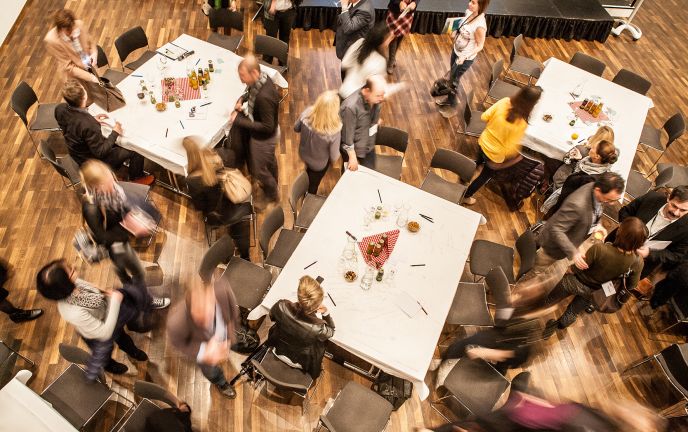
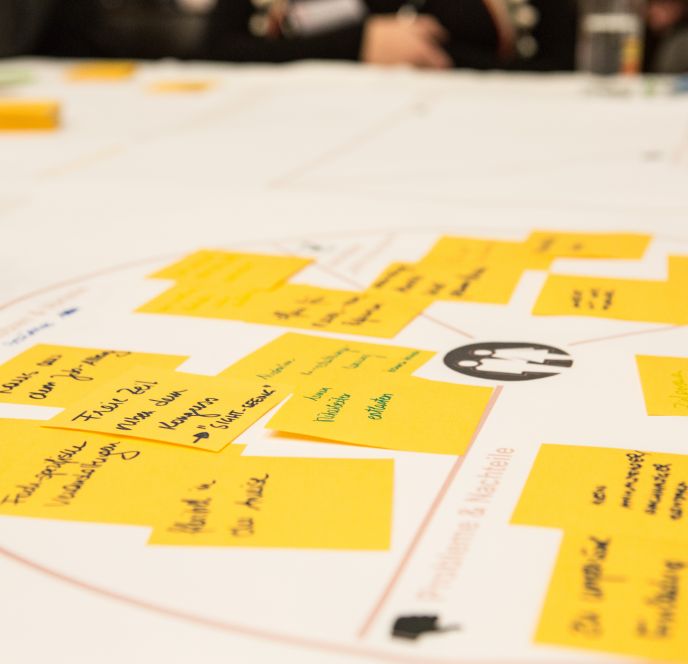
3. Brown Bag
Like many other formats, Brown Bag Sessions originated in the USA. The format gets its name from the lunch packages that people in the USA take into the office – usually in brown bags. The meetings of between 10 and 30 people take place during lunch breaks and therefore possess a more informal character. The participants receive topical input about specific subjects while eating the food they have usually brought along themselves. Brown Bag Sessions are particularly good for casually kicking off new projects and gathering preliminary information for further discussion. The on-line versions of Brown Bag sessions are now also becoming increasingly popular – the benefits are apparent: people at different locations are able to acquaint themselves with a variety of topics and then discuss them in closed groups.
4. Speed Geeking
Twelve topics in 60 minutes – speed geeking is a pretty intensive way to share knowledge. The format was originally used in the American hacker scene and is suitable for groups with between 12 and around 100 participants. The setting is similar to that used for speed dating. Each table is occupied by a presenter, the topics to be explored are introduced at the beginning. A signal is sounded to kick off the meeting and the individual participants are asked to choose a table. The presenters, already sitting at the tables, then provide the between six and eight participants who have joined them with a brief summary of the topic to be explored. Another signal is sounded after four minutes, which tells everybody that they now have one minute for questions and discussions. The sounding of another signal is the participants’ cue to move on to the next table; this process is continued until everyone has spent time at every table. Additional rounds with other presenters may take place depending on intensity.

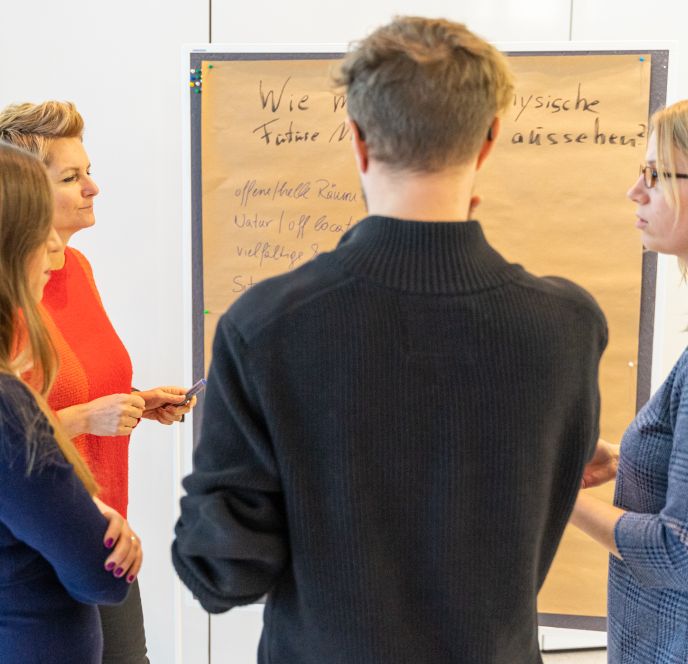
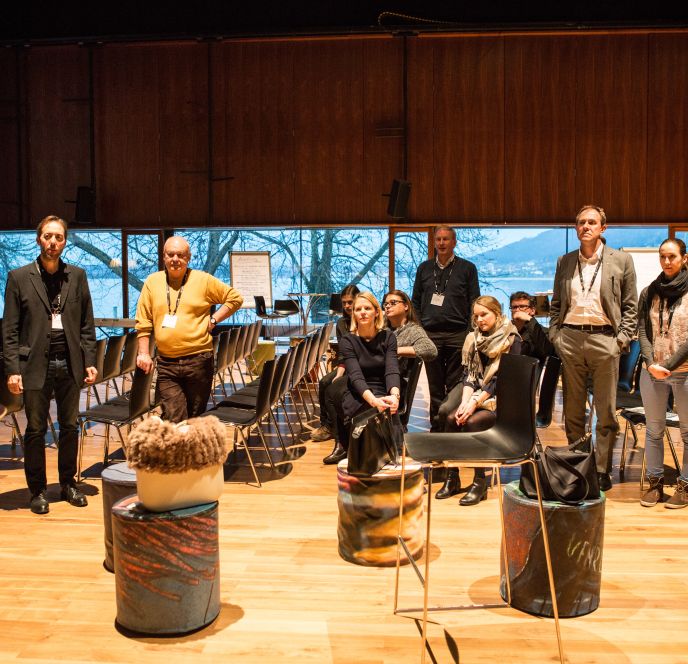
5. Pecha Kucha
The Pecha Kucha style of meetings is another way of maximising the bundling of information and also takes place in the shortest time possible. The term is Japanese and is an onomatopoeic word for the babble of human voices. The rules are strict: the speakers present 20 slides or images but are only allowed to spend 20 seconds on each. The next speaker storms on to the stage after precisely six minutes and 40 seconds. At least two to more than 1,000 people may take part in these events.
6. Ignite
The word ‘ignite’ is a really succinct term for these events. The sequence is the same as for Pecha Kucha but there is even less time to present the 20 slides: speakers only have 15 seconds per slide! So they have just five minutes to inspire the audience for their topics. It’s also what Ignite presentations hope to achieve: many meaty facts, the audience’s full attention, lots of scope for thoughts and conversations afterwards.
